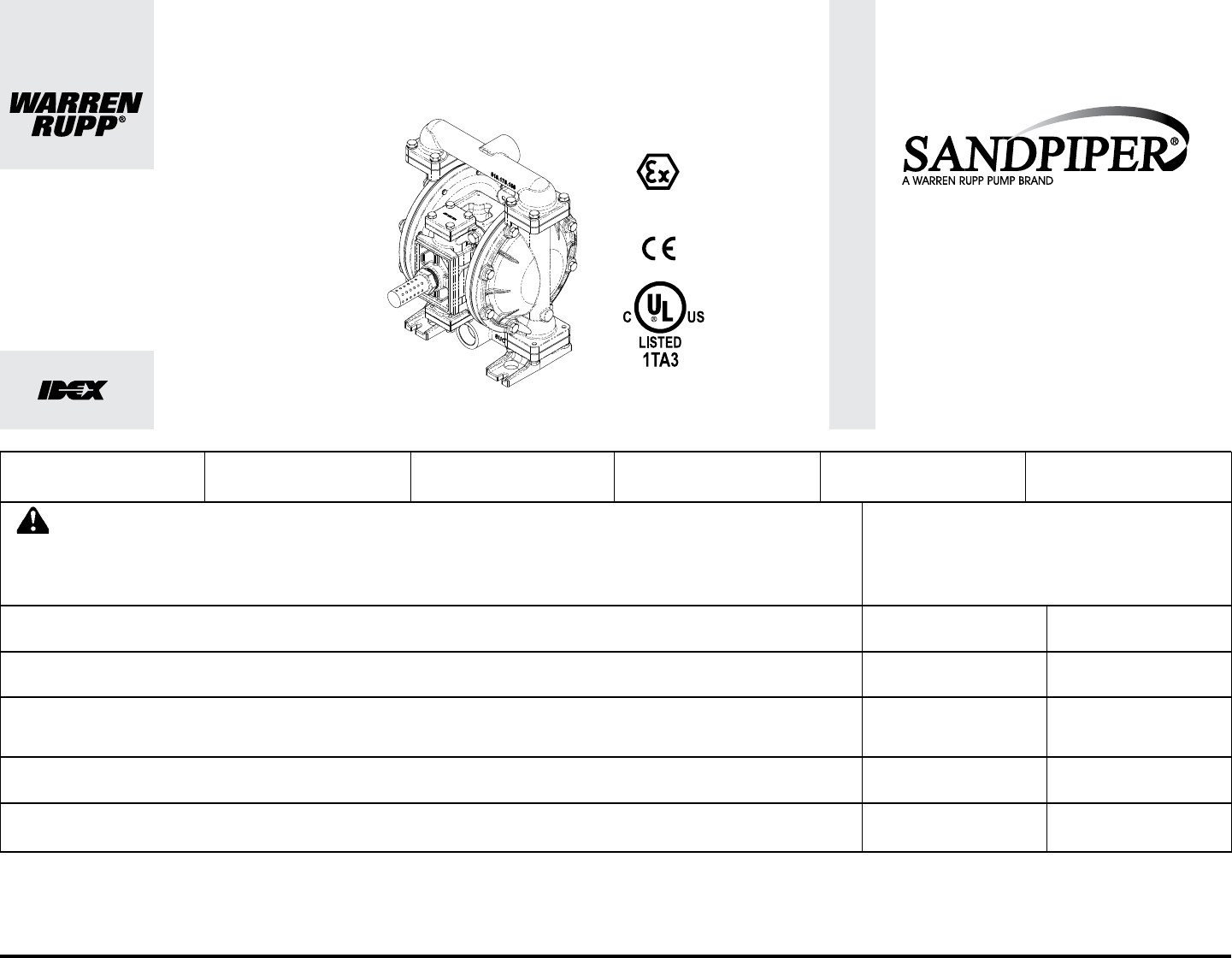Product Manual

u1fmdl1sm-rev0316 Model U1F UL79 Listed Metallic Design Level 1 Page 1
Quality System
ISO 9001 Certied
Environmental
Management System
ISO 14001 Certied
Nitrile General purpose, oil-resistant. Shows good solvent, oil, water and hydraulic uid resistance. Should not be used with highly polar
solvents like acetone and MEK, ozone, chlorinated hydrocarbons and nitro hydrocarbons.
NEOPRENE All purpose. Resistant to vegetable oils. Generally not affected by moderate chemicals, fats, greases and many oils and
solvents. Generally attacked by strong oxidizing acids, ketones, esters, nitro hydrocarbons and chlorinated aromatic hydrocarbons.
PTFE Chemically inert, virtually impervious. Very few chemicals are known to react chemically with PTFE: molten alkali metals, tur-
bulent liquid or gaseous uorine and a few uoro-chemicals such as chlorine triuoride or oxygen diuoride which readily liberate free
uorine at elevated temperatures.
Polypropylene: A thermoplastic polymer. Moderate tensile and ex strength. Resists strong acids and alkalie. Attacked by chlorine,
fuming nitric acid and other strong oxidizing agents.
UHMW PE: A thermoplastic polymer that is highly resistant to a broad range of chemicals. Exhibits outstanding abrasion and impact
resistance, along with environmental stress-cracking resistance.
Materials Maximum Minimum
Operating Temperatures
For specic applications, always consult Warren Rupp's “Chemical Resistance Chart”
SANDPIPER
®
pumps are designed to be powered only by compressed air.
INTAKE/DISCHARGE PIPE SIZE
1" NPT(internal)
1" BSPT Tapered (internal)
CAPACITY
0 to 45 gallons per minute
(0 to 170 liters per minute)
AIR VALVE
No-lube, no-stall
design
SOLIDS-HANDLING
Up to .25 in. (6mm)
HEADS UP TO
100 psi or 230.7 ft. of water
(7 Kg/cm
2
or 70 meters)
DISPLACEMENT/STROKE
.11 Gallon / .42 liter
CAUTION! Operating temperature limitations are as follows:
U1F Metallic
ENGINEERING, PERFORMANCE
& CONSTRUCTION DATA
Air-Operated
Double Diaphragm Pump
II 2GD T5
See pages 2, 24 and 25
for ATEX ratings.
Maximum and Minimum Temperatures are the limits for which these
materials can be operated. Temperatures coupled with pressure affect the
longevity of diaphragm pump components. Maximum life should not be
expected at the extreme limits of the temperature ranges.
190°F -10°F
88°C -23°C
200°F -10°F
93°C -23°C
220°F -35°F
104°C -37°C
180°F 32°F
82°C 0°C
180°F -35°F
82°C -37°C










